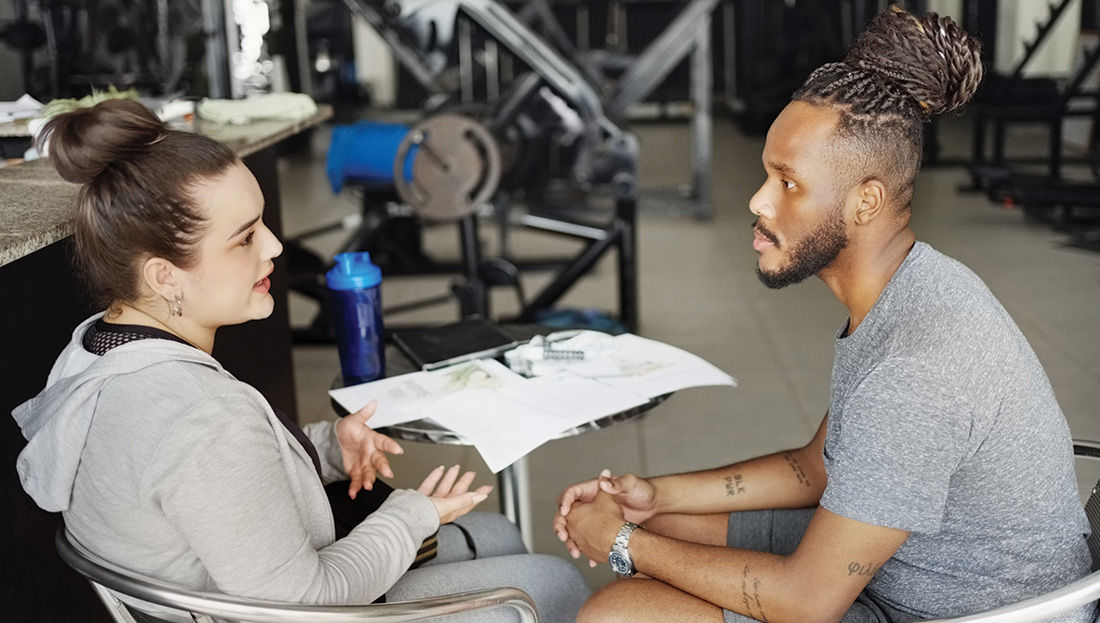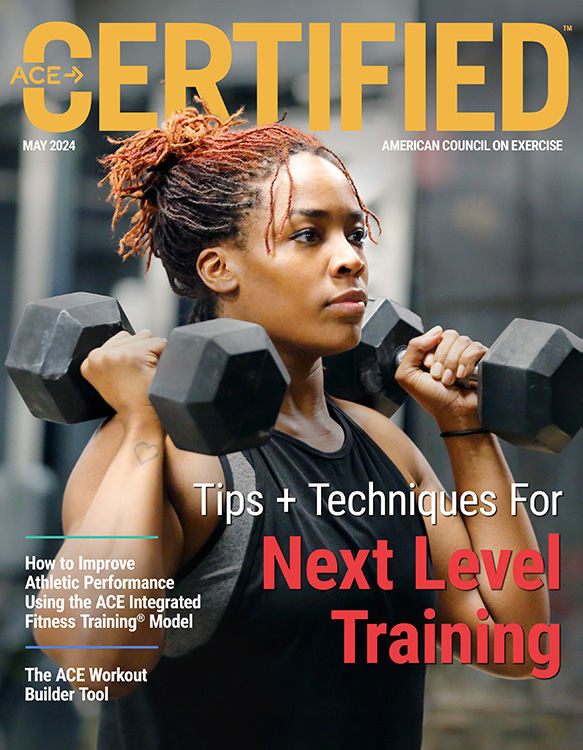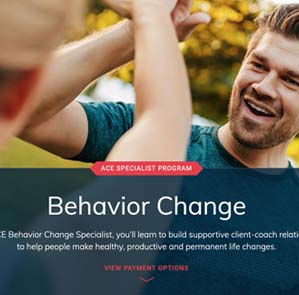
A traditional approach to personal training typically involves telling clients what to do and how to do it. However, while the exercise professional is the “expert” in exercise training, taking an authoritarian approach is less likely to promote true behavior change and long-term adherence to exercise and other habits—which is ultimately what clients are working toward.
Rather than simply telling your clients what to do, approaching your role as a coach is more likely to result in your clients achieving true behavior change. One particularly effective way to do that is through a technique called motivational interviewing, as it has been shown to be especially helpful when working and communicating with clients.
What is motivational interviewing and how can you apply it to your personal training practice? Let’s dive in.
What Is Motivational Interviewing?
Motivational interviewing (MI) is a person-centered therapeutic approach initially developed in 1983 by William Miller, PhD, Emeritus Distinguished Professor of Psychology and Psychiatry at The University of New Mexico. Miller collaborated with Stephen Rollnick, PhD, Honorary Distinguished Professor in the School of Medicine at Cardiff University, Wales, UK, a few years later to write the first edition of their book, Motivational Interviewing, in 1991 (there are now four editions, the latest of which was published in 2023).
It’s important to note that MI is not just a technique. Rather, says Miller, “It’s a mindset as well as a method and it does take time to learn.”
As Cecilia Lanier, senior author of the soon-to-be-published, Coaching with Motivational Interviewing (Guilford Press, August 2024) writes, “MI is the heart and mindset of the coach approach.”
But you don’t have to be a coach to apply MI to your practice. “MI has found broad applications in helping professions well beyond counseling and psychotherapy,” explains Miller, “such as healthcare, education, pastoral care, conflict resolution and leadership.”
“I would describe MI as a conversation style that promotes change and growth,” says Chris Gagliardi, MS, Scientific Education Content Manager for ACE. “In other words, MI is a way of having conversations with other people about changing behavior in a way that focuses on their strengths to empower them to act when they are ready.”
MI is also a way of building trust and rapport with your clients. “Thinking of MI as a way to have a conversation helps me to see how it applies to the relationships we build with our clients as health coaches and exercise professionals,” explains Gagliardi.
Because MI is a mindset that takes practice and time to learn—like any new habit—it is too expansive to cover completely here. But there are some ways that you, as an exercise professional, can begin to pivot your mindset from one of “I’m the expert and know best,” to believing that each client is an expert on themselves.
“For many professionals, acting as a guide can feel very different from the directing/expert role they may currently fill,” says Gagliardi. “While you are still an expert, it is important to also view your clients as experts on themselves.”
Getting Started with MI
According to Miller, MI encompasses four processes: engaging, focusing, evoking and planning.
“Engaging,” says Miller, “is nondirectional.” In other words, the trainer does not just bark orders, but rather engages the client and collaborates with them in designing their program. “The focusing process then moves toward establishing a shared direction or goals toward which to move.”
Miller says that the evoking process is what distinguishes MI from cognitive behavioral techniques. “In the evoking process, the interview intentionally applies person-centered skills—for example, open questions, affirmation, reflections and summaries—to evoke the client’s own motivations for change in the direction identified by the focusing process.”
When done correctly, MI evokes change talk and sustain talk—hallmarks of MI that influence the language clients use and suggest their commitment to, and motivation for, change.
Finally, says Miller, “the planning process explores how the client will move toward change; again, doing so in a person-centered, rather than a prescriptive, manner. Throughout these processes, MI includes offering information and advice as appropriate, but in a particular way that honors the person’s autonomy and choice.”
Because MI encompasses a whole new way of thinking, it can be daunting to know where to begin. Gagliardi suggests starting with the ACE Mover MethodTM to center yourself around the guiding spirit of MI. The tenets of the ACE Mover Method include:
- Making each professional interaction client-centered, recognizing that clients are the foremost experts on themselves
- Using powerful open-ended questions and active listening in every client session
- Believing that clients are genuinely viewed as resourceful and capable of change
Open-ended questions require more than a yes or no answer. For example, instead of asking your client if they exercised between sessions, an open-ended question might be, “What did you do for physical activity since our last session?”
Many of us are already thinking of what we’re going to say next instead of really listening to what our clients are saying. Active listening involves paying attention to what they’re saying, as well as picking up on other cues, such as body language and the emotions beneath their words. It also includes being fully present in the conversation and practicing eye contact, as well as asking open-ended questions to gain clarity and understanding.
Active listening is also non-judgmental, as you try to maintain neutrality. In other words, instead of placing judgment on a client when they say they didn’t exercise during the week they took off from training, ask questions to see if there was a reason or if they just simply chose not to. And then avoid lecturing them about it or making them feel ashamed. Instead, say something like, “I bet it felt good to take a little break from our routine. Hopefully, it’ll feel good to get back at it, too!”
One way to implement the ACE Mover Method is to use the ACE ABC ApproachTM. “It’s a simple way of remembering a good flow for motivational conversations,” says Gagliardi.
The ACE ABC Approach includes:
- Asking open-ended questions
- Breaking down barriers
- Collaborating
Use open-ended questions to get to know your clients on a deeper level. Get to know their preferences, their strengths and their weaknesses. Ask them what they’re hoping to achieve by working with you, what they’ve done in the past, and what they enjoy and don’t enjoy doing—as well as what they’re willing to try.
You’ll also use open-ended questions and active listening to ask clients to describe their potential obstacles to exercise, including getting to their sessions with you. Collaborate together to brainstorm possible solutions to the obstacles.
This is where it’s especially important to remember that your clients are the experts on their own lives. They know best what potential barriers are likely to come up. And, while you can suggest solutions to those barriers, they will have a better understanding of whether your solution is likely to work or not.
“The ask-offer-ask (AOA) technique is another relatively easy tool to incorporate with clients,” explains Gagliardi. “For example, if a client brings up eating healthier, instead of just assuming you know the right information to provide them about eating healthier, you would begin by asking the client what they already know about eating healthier. This is the first ‘ask.’ After they reply, you would then provide any relevant information about eating healthier with permission. This is the ‘offer.’ And then you would wrap things up by asking if what you shared makes sense or if they have any questions. This would be the second ‘ask.’”
Using scales can be another tool that can be useful when trying to learn how important a goal is to a client. “For example, you can use the importance ruler to reveal how important a particular goal is to them,” says Gagliardi. “You could ask, ‘On a scale of 0 to 10, with zero being not at all important and 10 being extremely important, how important is it for you to start eating healthier?’”
Gagliardi notes that the follow-up reply question is also important for eliciting change talk. For example, if they answered 6 on the 0-to-10 scale, you could follow up by asking them why they chose 6 and not 3. “Always follow up by asking why they didn’t choose a lower number,” says Gagliardi, “as that gets them talking about change talk and keep the conversation moving in a positive direction.”
You can also ask why they didn’t choose a higher number and what would make the number they gave go up on the scale. This can help gain more clarity of their barriers, as well as their values and priorities.
When beginning to incorporate MI, Gagliardi encourages health and exercise professionals to keep it simple. “It can be easy to feel overwhelmed when trying something new, especially something that might feel complicated. This is especially important when having a conversation with clients. Being present and completely focused on your client adds value to the services that you offer. Instead of trying to think of what to do next or what questions to ask, try to remember the purpose of an MI conversation.”
Gagliardi says that Miller and Rollnick offer a great visual that outlines this purpose. You are trying to determine: Can we walk together, where are we going, why would you go there and how will you get there? In other words, are you the right guide for this client, what are your client’s goals, why are their goals important to them, and what action steps do they plan to take to get there?
Books and Resources to Get You Started on Your MI Journey
- Motivational Interviewing: Helping People Change and Grow, 4th Edition, by Miller and Rollnick
- Motivational Interviewing in Nutrition and Fitness by Dawn Clifford and Laura Curtis
- Motivational Interviewing Network of Trainers (MINT)
Expand Your Knowledge
ACE Behavior Change Specialist Program
Any fitness, healthcare or allied health professional who wants to effectively guide their clients to their goals will benefit from this specialization. You will gain crucial communication skills to foster effective client-coach relationships and will learn cognitive behavioral coaching to help your clients reach their potential. After finishing the program, you will own critical skills that will elevate your profile as a health or exercise professional.
Improving Wellness Through Behavior Change – Course Bundle
Effect and inspire positive lifestyle change within your clients by applying behavior change strategies. Whether you are coaching clients in chronic pain or stress management, the Improving Wellness Through Behavior Change course bundle has you covered. Learn the latest techniques and strategies to work more effectively with your clients so they can establish healthy habits that last a lifetime.
Connecting With Clients in an Online Environment
Whether you’re an experienced virtual coach or just starting out in the digital environment, this course will help you develop strategies for building rapport with clients online, creating a sense of connection and trust, and helping clients stay motivated and engaged with their fitness goals.





 by
by 





